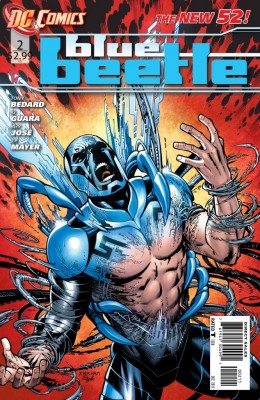American comic books have traditionally been dominated by white male characters that are wealthy and powerful and reflect the dreams of a once-mainstream audience of white boys.
Women and minorities have been hugely underrepresented in comics or, if there were characters from a minority background, they would be presented in a racially stereotypical way, often with their race or ethnicity shaping their super power such as the Zorro-like swordsman El Aguila or the Chinese-American girl Jubilee who shoots fireworks from her hands.
But times are changing as awareness grows that the high proportion of white men working in the comics industry is not reflective of the greater population and the potential readership market. The data crunching website FiveThirtyEight.com recently ran the numbers and found that while attendance at comic book conventions split fairly evenly between genders, only one in four comic book characters is female. Now, as the comics industry is trying to better reflect the market’s demographics, Latinos are slowly growing in influence.

Anthony R. Ramirez
Anthony R. Ramirez, a communication graduate student at the University of Texas at El Paso, studies the comic book history and the cultural trends within the industry. His thesis work is based on the sense of identity among comic book fans.
Ramirez said there has been a bit of Latino influence in comics for some time and several of the top writers and artists at companies like DC and Marvel are Latino.
“The ones that stand out are George Perez, Jim Amparo, and Joe Quesada (former editor-in-chief at Marvel),” Ramirez said.
But, when asked why there are still so few Latino characters, Ramirez explains that while there are a number of Hispanic-Americans involved with the creative side of comics, they often choose to work on the more famous established characters in mainstream comics.
“They sell more comic books than newer characters, you know,” Ramirez said. It’s rare for a new character to catch on quickly, unless it’s a fantastic story.”
New Latino characters may be featured in great stories, but aren’t publicized enough or don’t take off the way the publishers might want, he said.
 One example is DC comics hero Blue Beetle, a Mexican-American from El Paso, whose series was canceled in 2013.
One example is DC comics hero Blue Beetle, a Mexican-American from El Paso, whose series was canceled in 2013.
Some Latino comics creator are finding their voice outside of the major mainstream publishers like DC and Marvel.
Jaime “Jimmy” Portillo is an independent comic writer and owner of Jimmy Daze Comics. He’s published three major works so far. Two are horror stories – Gabriel and The Railroad Killer. His most well-known work is the six-part miniseries Hell Paso: The Story of Dallas Stoudenmire. He is currently working on an individual issue for the anthology series, Escape from Alcatraz.
People who want to break barriers for Latinos in comics should be ready to take the necessary steps themselves if they want to see any kind of change, Portillo said.
“Instead of complaining about it, do something about it. You might not make it but somebody else will,” he said.
Portillo supports efforts like the Latino Comics Expo that has been held in San Jose, California, since 2011. The convention mainly features independent creators like Portillo and serves to highlight those who celebrate Latino culture in their work.
Portillo did exactly that starting with his first comic, Gabriel, which takes place both in El Paso and Ciudad Juarez and features a completely Hispanic cast.
He said that promoting diversity in comics isn’t just an issue for Latinos.
“It’s the same in the black community as well. They’re not complaining. They’re doing something about it, and that’s what I like.”
Many independent creators, like Portillo, choose to go on their own rather than seek employment with a mainstream publisher in order to keep creative control over their projects and choose what they want to work on. But, Portillo said he would welcome the chance to work with a major publisher.
“If they offered me a job, I’d work for them in a heartbeat. Even if it was working on some little comic book for kids, I wouldn’t care,” he said.
Ramirez expects there will be more opportunities for Latino culture to surface as comic books continue to evolve with the times.
“In the early era they would talk about fighting mobsters. As it slowly went on around World War II they had Captain America and Superman fighting Nazis. During the Civil Rights movement they introduced the first black superhero,” Ramirez said.

